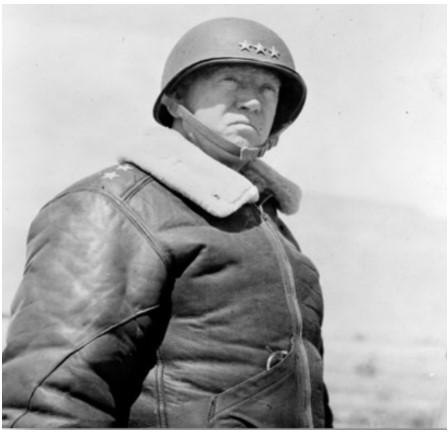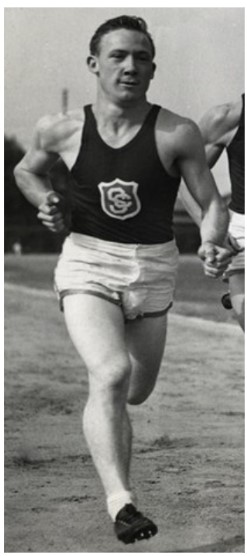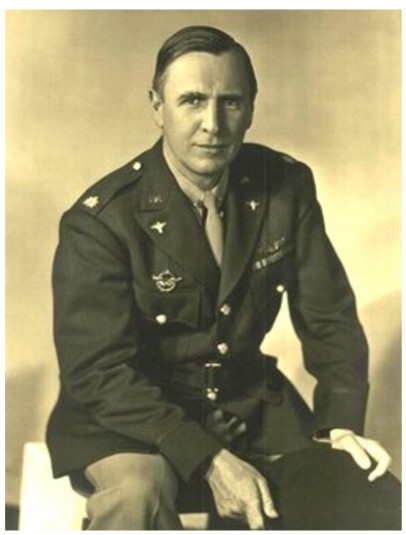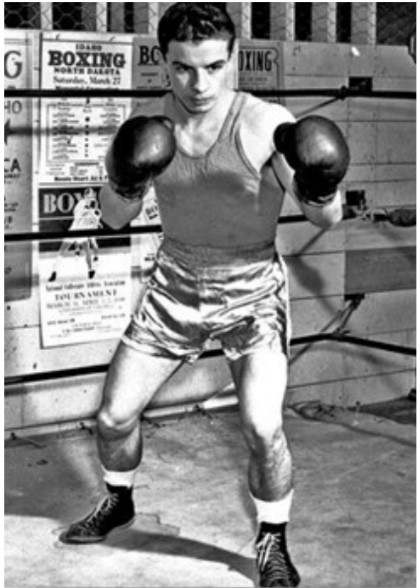A thirst for victory: Olympians buried at American Battle Monuments Commission sites
This July, the Olympic Games will start in Paris. In recognition of this world-class event, the American Battle Monuments Commission would like to highlight some Olympians who made the ultimate sacrifice and are buried at its sites.
Gen. George S. Patton
Before becoming the war hero we know, Gen. George S. Patton was a great sportsman. He qualified to represent the U.S. Army in the modern pentathlon at the 1912 Stockholm Olympics.
To be competitive for the five disciplines (swimming, fencing, cross-country riding, long distance running and shooting), he changed his lifestyle and adopted a rigorous diet without alcohol, tobacco or sweets, which had consequences on his entourage. His nephew, Fred Ayer said that he was “as amiable as a tiger from which a leg of game had just been torn from its jaws.”
Patton was also aware that this participation would serve his military career. However, a poor performance in shooting ruined his chance to access the podium. He finished fifth, which was still impressive for an amateur athlete. Thanks to his Olympic performances, he was allowed to perfect his riding skills at Saumur Cavalry School in Saumur, France. Patton was also selected for the 1916 U.S. Olympic team but because of World War I, the 1916 Berlin Olympics were cancelled.
Patton gradually climbed the military ranks to become a four-star general during World War II. He died in a car accident on Dec. 21, 1945, in Heidelberg, Germany, at the age of 60. Patton is buried in plot P, row 1, grave 1 at Luxembourg American Cemetery.
Capt. Foy Draper
Born in 1911 in Georgetown, Texas, Capt. Foy Draper was an American track and field athlete. He attended the University of Southern California where he won the college track and field championship in the 200 meters in 1935.
At the 1936 Berlin Olympics, in the face of segregation and the rise of Nazi Germany, he was part of the team who gave the world a lesson of solidarity and dignity. Draper ran the third leg as a member of the U.S. 4x100-meter relay Olympic team with Ralph Metcalf, Jesse Owens and Frank Wykoff. The Americans won the competition and set a world record of 39.8 seconds that held for 20 years.
During World War II, Draper joined the U.S. Army Air Forces and served as a bomber pilot. On Jan. 4, 1943, Draper and his crew took off on a mission to strike German and Italian ground forces in Tunisia. His plane was shot down. Draper and two crewmen died that day. Draper is buried in plot F, row 10, grave 7 at North Africa American Cemetery.
Lt. Col. Thomas Hitchcock
Lt. Col. Thomas Hitchcock was born in Aiken, South Carolina, on Feb. 11, 1900.
In the spring of 1917, he stopped his studies to join the Lafayette Flying Corps, American pilots flying for the French. He embarked for France, landing on June 10. A fortnight later, he enlisted in the French Aeronautical Service, after which Hitchcock trained as a pilot. On Oct. 17, 1917, he completed his training and received his pilot's license. On Dec. 12, Hitchcock was assigned to the Nieuport 87 group based at Lunéville.
Less than a month after this assignment, he shot down a German aircraft and was awarded the Croix de Guerre with palm. Over the next two months, the American pilot shot down two more enemy aircraft. However, on March 6, 1918, his luck ran out, as he was hit by an enemy plane, and crashed into German territory near Château Salins. Wounded in the thigh, the aviator was taken prisoner by the Germans and sent to the prison hospital in Saarbrücken, Germany.
After the Armistice, Hitchcock returned to his parents' home in Westbury, New York. In the spring of 1919, he resumed his studies and joined the chemical engineering courses at Harvard University. That same year, he took up polo again, the sport of his youth. This sport was so important, and he was so good at it, that in 1921 he joined the U.S. polo team. From that moment, he dedicated his life to polo, and established himself as one of the leading players over the next 20 years. In 1924, his team won the silver medal at the Paris Olympic Games.
In December 1941, the U.S. entered World War II, and the following month Hitchcock was promoted to major in the U.S. Air Intelligence. In April 1942, he was assigned to the U.S. Embassy to the U.K. in London as liaison between the American Air Force and British Fighter Command.
Hitchcock was then assigned to command the 408th Fighter Group based in Abilene, Texas. However, the Army soon gave him another position, and in February 1944, Hitchcock returned to England to become Deputy Chief of Staff of the Nineth Air Support Command, in charge of tactical research and development. He was killed on April 18, 1944, while testing a Mustang aircraft near Salisbury, in the southwest of London. Hitchcock is buried in plot A, row 6, grave 21 at Cambridge American Cemetery.
2nd Lt. Theodore “Ted” E. Kara
Second Lt. Theodore “Ted” E. Kara was born on April 2, 1916, in Cleveland, Ohio. His story is one of both triumph and sacrifice. Kara had great boxing skills he used in the 1936 Olympic Games in Berlin when he made it to the quarterfinal match, though he had fallen short of winning a medal.
In 1938, he emerged victorious in a boxing match against Capt. Carl Ekstrom, who also fell during World War II and is buried at Normandy American Cemetery.
Kara served as a radioman in the U.S. Army Air Forces during WWII in the Pacific Theater. He was declared missing in action in February 1945 and dead a year after. He is commemorated on the wall of the missing at Manila American Cemetery.
These stories are just some examples of Olympians buried at ABMC sites, but ABMC honors all service men and women who made the ultimate sacrifice for freedom. Through their deeds on the battlefield and in their respective sporting disciplines, those service members shared common values such as courage, respect or determination and created a legacy of peace for the future generations.
Sources:
NOAC onsite temporary exhibition “World War II & the Olympics: a legacy of peace
SUAC team for Hitchcock’s story
Historical Services
ABMC documents and brochures




